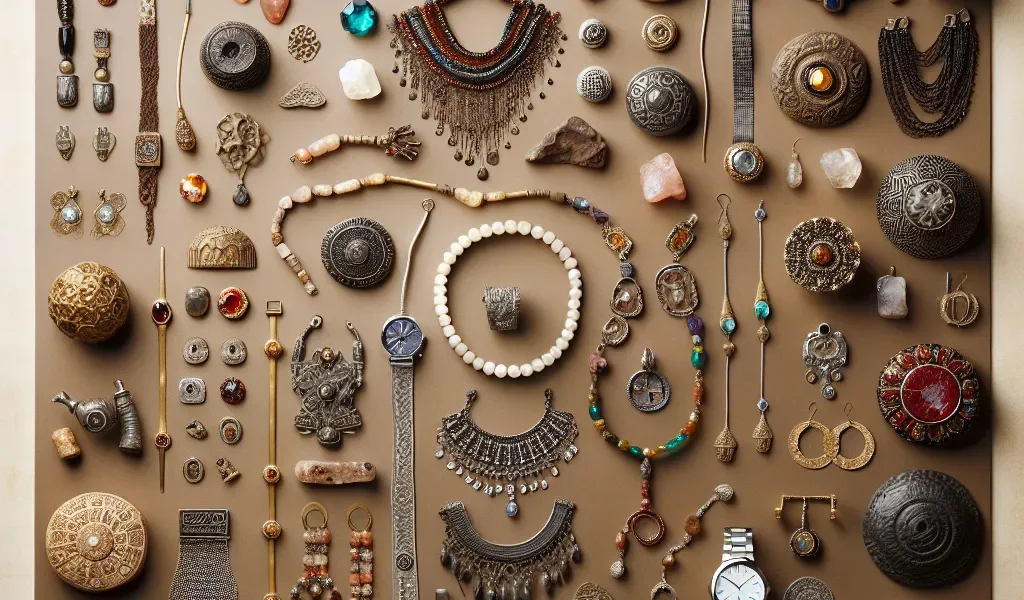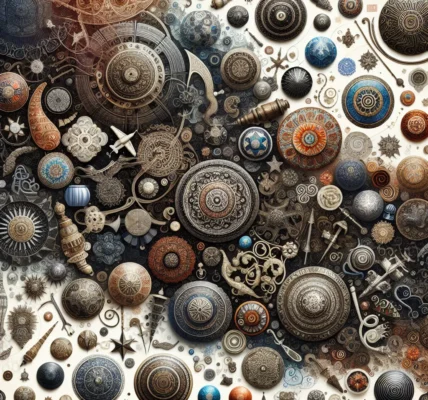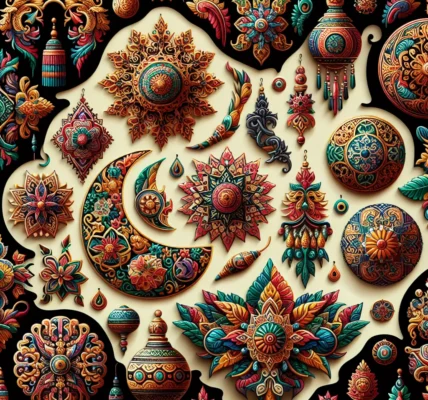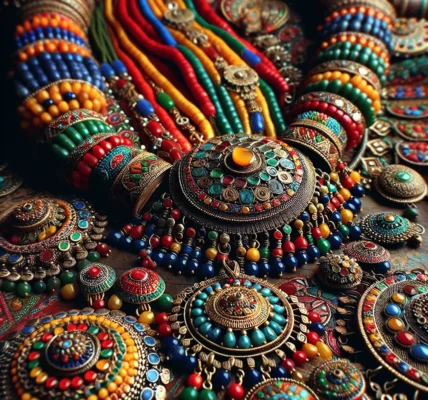The Significance of Ornaments in Prehistoric Societies
Ornaments have played a significant role in the evolution of human societies, particularly in prehistoric times. The use of ornaments, such as jewelry and body decorations, dates back to the earliest known human cultures and has been a crucial aspect of human expression and communication. In prehistoric societies, ornaments held immense significance, serving as markers of status, identity, and cultural symbolism.
One of the key roles of ornaments in prehistoric societies was the indication of social status and hierarchy. Elaborate and intricately crafted ornaments were often worn by individuals of higher social standing, signaling their elevated position within the community. This demonstration of status through ornaments not only conveyed power and prestige but also facilitated social order and structure within these early human groups.
Furthermore, ornaments in prehistoric societies held cultural and symbolic meanings. They were adorned with materials and designs that carried specific significance and often reflected the values and belief systems of the community. For instance, certain ornaments may have been associated with spiritual or religious rituals, embodying supernatural beliefs and practices. The symbolism attached to these ornaments enabled the transmission of cultural heritage and traditions across generations.
Moreover, the use of ornaments in prehistoric societies served as a form of personal and collective expression. Individuals adorned themselves with ornaments to not only enhance their physical appearance but also to communicate identity, affiliation, and individuality within the community. Ornamentation became a language of its own, enabling the expression of diverse meanings and emotions through the choice and arrangement of adornments.
In conclusion, the significance of ornaments in prehistoric societies cannot be understated. Their role in indicating social status, conveying cultural symbolism, and enabling personal expression highlights the profound impact of ornaments on early human communities.
Cultural Influences on the Development of Ornaments
Throughout human history, ornaments have played a significant role in reflecting cultural influences and societal development. The evolution of ornaments is closely intertwined with the cultural practices, beliefs, and artistic expression of different civilizations. From the earliest forms of body adornment to the intricate jewelry and decorative objects of modern times, the development of ornaments has been shaped by the cultural values and traditions of diverse societies.
Early civilizations such as the ancient Egyptians, Greeks, and Romans used ornaments not only as symbols of status and wealth but also as expressions of religious and spiritual beliefs. The intricate designs of jewelry and ornaments often depicted deities, mythical creatures, and symbolic motifs that held deep cultural significance. These artifacts not only showcased the craftsmanship of the time but also served as carriers of cultural identity and heritage.
As societies evolved and interacted with one another, the exchange of ideas and cultural practices influenced the designs and materials used in ornaments. The Silk Road, for example, facilitated the exchange of not only goods but also artistic styles and techniques, leading to the fusion of different cultural elements in ornament making. This cultural exchange resulted in the adoption of new materials, designs, and ornamentation techniques, further enriching the diversity of ornaments across different cultures.
Moreover, the significance of ornaments in cultural ceremonies and rituals also shaped their evolution. From tribal societies using body ornaments in coming-of-age rituals to the elaborate crowns and regalia worn by royalty in ceremonial events, ornaments have been integral to the expression of cultural traditions and social practices.
In conclusion, the evolution of ornaments has been deeply influenced by cultural practices, beliefs, and societal values. From ancient symbols of spirituality to modern fashion statements, ornaments continue to be a reflection of the diverse cultural tapestry of human history.
Evolution of Adornments: From Ancient Civilizations to Modern Trends
Throughout human history, the evolution of ornaments has showcased the changing cultural, social, and artistic trends from ancient civilizations to modern times. Adornments, such as jewelry, tattoos, body piercings, and clothing embellishments, have played a significant role in human expression and communication. From the early use of natural materials like feathers, bones, and shells by ancient tribes to the intricate metalwork and gemstone jewelry of the Egyptian, Roman, and Greek civilizations, the evolution of adornments reflects the technological advancements and artistic achievements of each era.
Ancient civilizations used ornaments as symbols of status, wealth, and spirituality. For instance, in ancient Egypt, jewelry wasn’t just a fashion statement but also played a crucial role in religious and funerary practices. Similarly, the intricate designs of Celtic metalwork showcased the craftsmanship and symbolism of the ancient European tribes. As societies progressed, the use of precious metals, such as gold and silver, became more widespread, leading to the creation of elaborate ornaments that represented power and prestige.
With the advent of global trade and exploration, the exchange of cultural influences contributed to the diversity of ornamentation styles. The Renaissance period brought forth a revival of classical motifs and elaborate designs, while the Industrial Revolution facilitated mass production, making jewelry and adornments more accessible to a wider population. Twentieth-century modernism revolutionized the concept of jewelry, introducing minimalist and abstract designs that reflected the changing societal values and artistic movements.
Today, the evolution of adornments continues to be influenced by a blend of tradition, technology, and individualism. Modern trends encompass a wide range of styles, from vintage-inspired designs to futuristic and experimental forms of body art and accessories. Furthermore, the emergence of sustainable and ethically sourced materials reflects the contemporary emphasis on environmental consciousness and social responsibility in the world of adornments.
In conclusion, the evolution of ornaments from ancient civilizations to modern trends highlights the dynamic nature of human expression and creativity. Through the ages, adornments have encapsulated the spirit of their time, serving as cultural artifacts that not only embellish the body but also convey a deeper narrative of human history and societal evolution.
Psychological Impact of Ornaments on Human Behavior
Ornaments have played a significant role in human history, evolving from simple natural elements to intricate and symbolic designs. The psychological impact of ornaments on human behavior has been profound, influencing social interactions, self-expression, and even cognitive processes.
From ancient times, ornaments such as jewelry, body paint, and clothing accessories have been used to communicate social status, group affiliation, and personal identity. The act of adorning oneself with ornaments can serve as a form of non-verbal communication, signaling individual traits and facilitating social interaction. This visual signaling can impact the perception of others and influence the dynamics of social relationships.
Moreover, the act of wearing ornaments has been linked to psychological processes such as self-esteem, confidence, and mood regulation. Studies have shown that individuals may experience a boost in self-confidence and mood when wearing ornaments that hold personal or cultural significance. Furthermore, the act of adorning oneself can create a sense of empowerment and provide a psychological anchor in navigating social situations.
The evolutionary significance of ornaments in human history can be attributed to their profound psychological impact on human behavior. As a means of communication and self-expression, ornaments continue to shape our social interactions and influence our psychological well-being.




